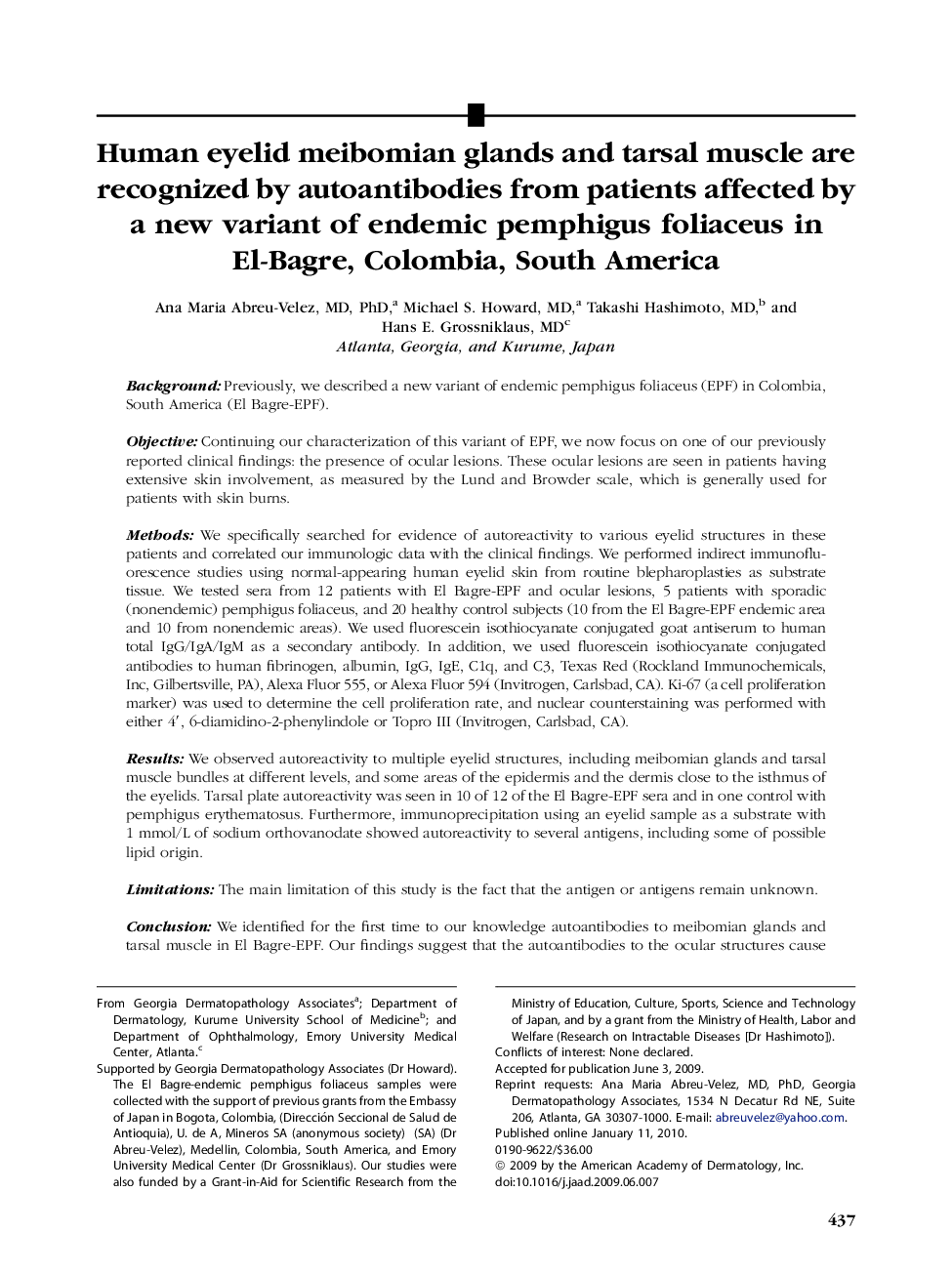| کد مقاله | کد نشریه | سال انتشار | مقاله انگلیسی | نسخه تمام متن |
|---|---|---|---|---|
| 3208796 | 1587596 | 2010 | 11 صفحه PDF | دانلود رایگان |

BackgroundPreviously, we described a new variant of endemic pemphigus foliaceus (EPF) in Colombia, South America (El Bagre-EPF).ObjectiveContinuing our characterization of this variant of EPF, we now focus on one of our previously reported clinical findings: the presence of ocular lesions. These ocular lesions are seen in patients having extensive skin involvement, as measured by the Lund and Browder scale, which is generally used for patients with skin burns.MethodsWe specifically searched for evidence of autoreactivity to various eyelid structures in these patients and correlated our immunologic data with the clinical findings. We performed indirect immunofluorescence studies using normal-appearing human eyelid skin from routine blepharoplasties as substrate tissue. We tested sera from 12 patients with El Bagre-EPF and ocular lesions, 5 patients with sporadic (nonendemic) pemphigus foliaceus, and 20 healthy control subjects (10 from the El Bagre-EPF endemic area and 10 from nonendemic areas). We used fluorescein isothiocyanate conjugated goat antiserum to human total IgG/IgA/IgM as a secondary antibody. In addition, we used fluorescein isothiocyanate conjugated antibodies to human fibrinogen, albumin, IgG, IgE, C1q, and C3, Texas Red (Rockland Immunochemicals, Inc, Gilbertsville, PA), Alexa Fluor 555, or Alexa Fluor 594 (Invitrogen, Carlsbad, CA). Ki-67 (a cell proliferation marker) was used to determine the cell proliferation rate, and nuclear counterstaining was performed with either 4′, 6-diamidino-2-phenylindole or Topro III (Invitrogen, Carlsbad, CA).ResultsWe observed autoreactivity to multiple eyelid structures, including meibomian glands and tarsal muscle bundles at different levels, and some areas of the epidermis and the dermis close to the isthmus of the eyelids. Tarsal plate autoreactivity was seen in 10 of 12 of the El Bagre-EPF sera and in one control with pemphigus erythematosus. Furthermore, immunoprecipitation using an eyelid sample as a substrate with 1 mmol/L of sodium orthovanodate showed autoreactivity to several antigens, including some of possible lipid origin.LimitationsThe main limitation of this study is the fact that the antigen or antigens remain unknown.ConclusionWe identified for the first time to our knowledge autoantibodies to meibomian glands and tarsal muscle in El Bagre-EPF. Our findings suggest that the autoantibodies to the ocular structures cause the clinical and histopathological findings in the ocular lesions in El Bagre-EPF.
Journal: Journal of the American Academy of Dermatology - Volume 62, Issue 3, March 2010, Pages 437–447